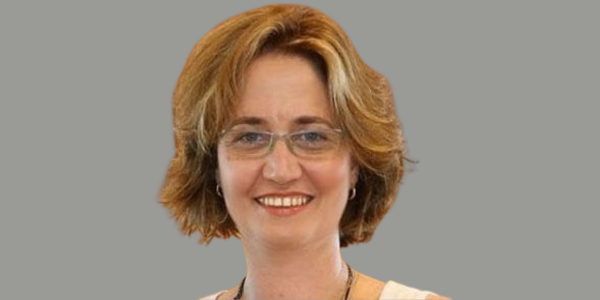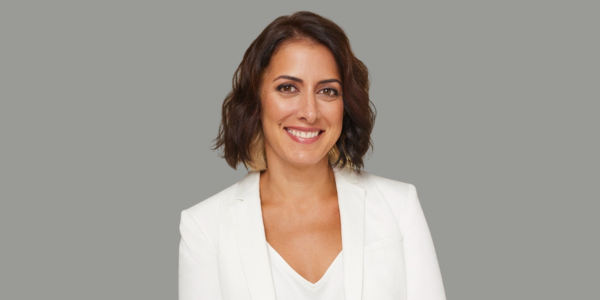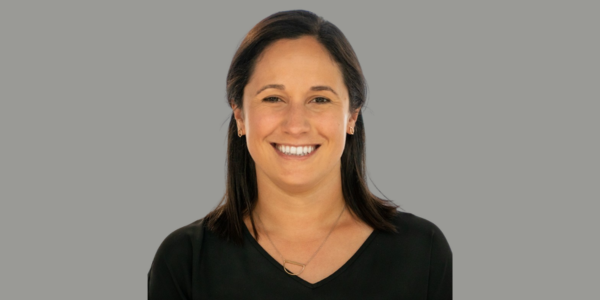Where Are All The Female CTOs?
Here They Are

In today’s fast-paced digital landscape, the role of Chief Technology Officers (CTOs) has never been more pivotal. The COVID-19 pandemic accelerated the adoption and importance of agile solutions, catapulting CTOs to the forefront of organizational strategy.
CTOs are no longer simply tech experts but strategic leaders spearheading a new “virtual enterprise” model, powered by cloud technologies, AI, and automation. They play a central role in driving business decisions during a period of exceptional disruption. Navigating this change requires a diversity of thought, and for business, that means new skills, experiences, and potential. This blog will explore the role that more women are playing in helping bring that diversity to the CTO position.
Report Authors

Brittney Wade
Senior Associate, Women's FundBrittney brings investing, product, and operational experience from her time working with both enterprises and startups. Prior to joining AV, Brittney worked as a Product Manager at Mastercard for buy-now-pay-later and installment solutions, building new products and scaling them to customers globally. She transitioned to the startup ecosystem, working with seed- to growth-stage companies. At Trove, a Series D startup, she led product development for the launch of Canada Goose’s first circular economy resale program in Canada and the US. She joined AV as a member of the Seed team that invests in pre-seed and seed-stage companies prior to joining the Green D Ventures’ team. She received her BA from Columbia University and holds an MBA from Dartmouth’s Tuck School of Business, where she served as a student board member for the Magnuson Center for Entrepreneurship.

Meera Oak
Partner, Women's FundMeera’s background includes strategic, financial, and operational experience from her time at Yale University, where she managed a $1B budget (of a $4B organization), led M&A transactions, and secured business development relationships with corporate partners. Most recently, she worked with early-stage venture funds and incubators like Create Venture Studio and Polymath Capital Partners and was responsible for launching business ventures and sourcing investments in enterprise SaaS, infrastructure, and ecommerce. Meera has a BA in Economics from Swarthmore College and an MBA from the Tuck School of Business at Dartmouth.
Meeting the Barrier Breakers
Diversity in science, technology, engineering, and mathematics (STEM) is challenging. STEM’s lack of diversity is often attributed in part to a “leaky pipeline” — the idea that, despite interest and the ability to succeed in STEM careers, women tend not to pursue or remain in them.
While there has been significant progress in women’s participation in STEM education globally, workforce parity remains a challenge, with women representing a mere 28% of STEM professionals in the U.S. in 2023 (source: MIT). Moreover, in roles like software engineering — one of the fastest-growing and highest-paid jobs in the industry — only 15% in the U.S. are women (Society of Women Engineers).
Despite this, female technical leaders have found themselves at the helm of some of the most category-defining companies and organizations in tech history. Women like Rachana Kumar (Etsy CTO), Rathi Murthy (Expedia CTO), Rowena Yeo (Johnson & Johnson CTO), Michelle Grover (Slalom CTO), and more have paved the way for the next generation of technical leaders. In more recent history, Mira Murati, CTO of OpenAI, claimed the role of one of the most powerful women in tech not only for her position within the company but also for her brief stint as CEO in late 2023. She has helped to scale OpenAI to the company it is today and leads teams to build innovative technologies and products, including ChatGPT, DALL-E, and GPT-4.
As we reflect on the strides made by prominent technical figures in the industry, we’re especially inspired by the potential of the next generation of female leaders, many of whom are spearheading promising ventures within our own portfolio. AV has an established track record of backing women’s ambitions — from hypersonic flights and novel fertility treatments to AI platforms and robotic technology.
Read on as we highlight companies driving the future of innovation and the women directing technical leadership. Their work has been the building blocks of AV’s newly launched Women’s Fund, where we will increase our support of both female leaders and their new ventures.
AV’s Portfolio Powerhouses
Molecular diagnostics company Nanopath is led by duo Amogha Tadimety, who serves as Co-Founder and CEO, as well as Alison Burklund, who is Co-Founder and CTO. Together, they are disrupting traditional testing methods by developing a point-of-care solution that provides women with rapid and comprehensive results for viral, bacterial, and fungal pathogens.

Altera, a recent addition to the AV portfolio, is an AI startup focused on building life-like digital agents with social-emotional cognition comparable to humans or “digital humans.” The company is launching first with gaming partners, with plans to expand to all AI-enabled agents. Leading the technical side of the business is CTO Shuying Luo, who brings years of experience as a Google engineer.

Also making technical waves is Ethena, an all-in-one compliance training platform designed to reinvent how companies manage required employee training. They deliver personalized content in frequent, digestible doses to drive engagement and adherence. CTO Anne Solmssen has led Ethena’s technical and product development team for nearly five years, and their solutions are used by the likes of Zendesk, Pinterest, Notion, and BetterUp.

On the food side, Aleph Farms is reinventing the status quo by producing no-kill-needed beef steaks using the natural cells of a cow via a 3-4 week cultivation process. Aleph’s CTO and VP of R&D Neta Lavon is a stem cell expert with 20 years of experience. Under her leadership, the company has released the world’s first cultivated steak in 2018 and a ribeye cut in 2021.

Another AV portco imagining a more sustainable future is Seaspire Skincare. Its skincare line uses their novel ingredient Xanthochrome, which is good for humans and safe for marine life when it washes down the drain. Seaspire’s CTO and Co-Founder Leila Deravi has dedicated her research to developing new materials inspired by biology into products.

Rounding out our portfolio highlights is Canvas, a developer of robotic technology to increase the speed of building starting with basics: drywall. Combined with skilled workers, Canvas’ robots enable companies to improve affordability of construction and working conditions for the people who work alongside them. CTO Maria Telleria has leveraged her background in machine design and manufacturing to lead Canvas’ technical team, produce numerous drywall systems, and incorporate customer feedback into future machines.

In Her Own Words
While these companies capture a microcosm of female leaders in the AV portfolio, they all have a woman leading the technical charge for their companies. We asked each of these CTOs about their decision to pursue a technical career, the challenges and triumphs that have come with it, and their advice for the next generation of women and girls hoping to follow in their footsteps. Hear from each of them in their own words below.
Q: What inspired you to pursue a technical career?
Alison Burklund, Nanopath
“I saw science and engineering as a means to make a significant positive impact on the world. Not only did I enjoy the work, but I was motivated by the prospect of solving some of the world’s toughest challenges through creative scientific thinking. The more exposure to the field I received, the more interesting the work became — not only as a mechanism for change, but also as a tool to help better understand the world around us.”
Maria Telleria, Canvas
“From a very young age, I have enjoyed fixing things around the house with my dad. My dad always had the philosophy that we should try to fix things ourselves first and that there is a lot to be learned from this. That approach gave me exposure to a lot of different problems and solutions, some more elegant than others — and some resulting in us deciding we needed to call a professional. But the fun was trying.
This interest was then fed by motivation. Growing up through my dad’s work and friends, I got to learn about and visit manufacturing plants. I was amazed by the high-tech manufacturing you could find, with assembly lines that included robots and other automation. But I was disheartened by the working conditions at other factories where people had no tools to make their work better.
I couldn’t understand why there was such a disparity, and I wanted to work on creating tools to improve their work. This led me to studying engineering — in particular mechanical engineering, with a focus on machine design and robotics.”
Neta Lavon, Aleph Farms
“I was inspired to pursue a technical career by my passion for leveraging technology to solve real-world problems and enhance people’s lives. My drive stems from a desire to make processes more efficient, improve health outcomes, and create enjoyable experiences through innovative solutions.”
Leila Deravi, Seaspire Skincare
“I always knew that I would finish with a terminal degree in my major (Chemistry) when I started at the University of Alabama. I was driven by the creativity and innovation afforded by research and knew that in order to maximize this, I needed a PhD. Having a PhD gave me flexibility to customize my technical career, which is how I landed as Associate Professor of Chemistry at Northeastern and CTO at Seaspire Skincare.”
Learn More About the Women’s Fund
Invest in women entrepreneurial leaders bringing their talents and perspective to promising markets — from femtech to software, pharma, biotech, CPGs, and more.
Max Accredited Investor Limit: 249
Q: What role does technical expertise play in shaping overall business strategy at your company?
Shuying Luo, Altera
“We are a deeply technical group. Understanding what is the cutting edge of research and transforming that into products effectively is crucial to our business success. We encourage continuous learning as it’s not only beneficial to individuals’ development but also the business’ competitive advantage.”
Anne Solmessen, Ethena
“Many strategic decisions involve ROI calculations, and technical expertise is crucial to getting those calculations right.”
Leila Deravi, Seaspire Skincare
“Technical expertise can help legitimize and often enable new directions in any company’s business strategy. It gives the team the numbers / data that support the assumptions / forecasting required for identifying market impact.”
Alison Burklund, Nanopath
“Both me and my Co-Founder, Amogha Tadimety, come from a deeply technical background. When it comes to making business decisions, we approach the process quite scientifically. There’s no doubt that there is a very human element to business strategy and success, but, when appropriate, we start by tackling the question with a scientific mindset. We create an unbiased framework to gather data / information, challenge outstanding assumptions, interpret the information as objectively as possible, and draw conclusions that, in part, can inform business decisions.
As an example, to identify our beachhead market, we interviewed over a hundred possible customers and stakeholders from a range of different clinical and customer segments, analyzed the outputs of those conversations, and decided on our first target market in women’s health as a function of those interviews. It helped that we were also personally excited to make an impact in the women’s health space!”
Q: How do you facilitate collaboration and bridge gaps between technical and nontechnical teams to ensure successful outcomes?
Maria Telleria, Canvas
“One thing that I always keep in mind and emphasize to my team is that understanding your counterpart is critical to your communication and collaboration approach. This entails not only refraining from using jargon that may isolate others, but also bearing in mind the responsibilities and motivations of your counterpart.
For example, what metrics are they responsible for? If I understand this, then I can better collaborate because I’m also looking for how a project relates to them. In my view, the focus isn’t on avoiding detailed discussions or oversharing, but rather on actively engaging on the key areas that impact them. This is more easily done if we share more often.
I find that when teams work isolated on something for a long time and then bring in others, there is more resistance because so much has already been done and decided — which means that any changes are a lot of work. Engaging nontechnical teams early allows them to provide crucial feedback, which in turn is much easier for the technical team to incorporate as they develop the solution. Finally, another way to bridge gaps is to encourage the nontechnical teams to spend time with the product, in our case, running the robot. Similarly, have technical team members spend time with customers or listen to sales pitches so they can understand what the customer wants.”
Anne Solmssen, Ethena
“Our team structure is cross-functional by design. Technical and nontechnical product developers work side by side, and we believe that cross-pollination helps everyone be more effective.”
Neta Lavon, Aleph Farms
“I foster collaboration between technical and nontechnical teams by prioritizing open communication and active listening. Nontechnical teams are encouraged to express challenges, while technical teams attentively listen and engage in iterative brainstorming and solution design. By valuing diverse perspectives and fostering a culture of inclusivity, we bridge the gap between disciplines, driving towards innovative and effective solutions.”
Shuying Luo, Altera
“At our company’s stage, I believe a shared goal and clear vision towards that goal is the key to collaboration. To facilitate the shared goal, I tried my best to foster clear and transparent communication. I will break down technology silos as I see them and make sure each person understands how their work and other’s work contributes to the final goal.”
Q: What emerging technology or capability are you most excited about?
Alison Burklund, Nanopath
“I’m thrilled to see the renewed energy and excitement around women’s health innovation. We see increased funding initiatives dedicated to improving women’s health in both the public and private sector and across the entire research and development spectrum.
I’m personally most excited by much of the ongoing research in the vaginal microbiome space. I’m looking forward to the moment that our understanding of the vaginal microbiome is able to directly inform clinical decision making. This will require the integration of advances in fundamental biology, improved diagnostic technologies, and the development of highly targeted therapies.
I’m equally excited to see institutions begin to close many existing health equity gaps. Specifically, providing equitable solutions to pain management, birth control, and diagnostic technologies.”
Shuying Luo, Altera
“All the new developments of LLMs (Large Language Models) and Multi-Modal models and Agent research are exciting to me. I used to experiment with the latest models with my own test data to see what technology is capable of. It’s fascinating to see the huge improvements in recent years. More exciting for me, the process of transferring a research model into a production one is shortening, which makes it faster to get our product into users’ hands.”
Anne Solmssen, Ethena
“Professionally, our team has been loving GitHub’s Copilot. Personally, I can’t wait for my first ride in a fully autonomous car. (Waymo, call me!)”
Neta Lavon, Aleph Farms
“I’m most excited about in silico protein design using innovative tools such as DeepMind. This approach has a huge potential to revolutionize the scalability and cost-effectiveness of biomanufacturing, accelerating our journey towards sustainable and accessible biological products.”
Leila Deravi, Seaspire Skincare
“I am a science junkie, so it does not take much to get me excited! But I gravitate towards any new technology designed to flip industry standards upside down.”
Maria Telleria, Canvas
“I think we are all very excited by the latest developments in AI; there are just so many interesting applications. For our product, I’m most excited about how we can augment our AI stack with the latest approaches to make the robot even easier to use. New learning models can improve how the robot makes decisions, freeing up the operator from tedious tasks.
This is also compounded by the amazing speed at which sensors and computing power are developing at. That means we can make more real-time decisions based on changing site conditions. To do that, you need sensors that are accurate enough and cost-effective to give you feedback, and you need computing power to quickly process these inputs. We leverage this computing power and advances in AI to create models that are specific to the site we are operating in, which greatly increases the accuracy of your model outputs. For us, that means higher-quality finish and reduced user input.”

The Future of Her-story
As technology continues to evolve, the role of the CTO will only become more critical. The ascent of the CTO marks a paradigm shift in organizational leadership, where technology is not just a tool but a strategic asset driving growth and innovation.
As businesses navigate the complexities of the digital age, CTOs will undoubtedly play a central role in shaping their success. This is clear from our experience with trailblazers like Alison Burklund, Maria Telleria, Shuying Luo, Anne Solmssen, Neta Lavon, and Leila Deravi. Their journeys exemplify the transformative power of curiosity and determination, driving innovative change at their respective companies.
As we celebrate the successes of these leaders, AV remains committed to supporting and championing the next generation of visionary companies and diverse entrepreneurs, ensuring that the tech landscape continues to evolve toward greater inclusivity and impact.
Learn More About the Women’s Fund
Invest in women entrepreneurial leaders bringing their talents and perspective to promising markets — from femtech to software, pharma, biotech, CPGs, and more.
Max Accredited Investor Limit: 249
This communication is from Alumni Ventures, a for-profit venture capital company that is not affiliated with or endorsed by any school. It is not personalized advice, and AV only provides advice to its client funds. This communication is neither an offer to sell, nor a solicitation of an offer to purchase, any security. Such offers are made only pursuant to the formal offering documents for the fund(s) concerned, and describe significant risks and other material information that should be carefully considered before investing. For additional information, please see here. Example portfolio companies are provided for illustrative purposes only and are not necessarily indicative of any AV fund or the outcomes experienced by any investor. Example portfolio companies shown are not available to future investors, except potentially in the case of follow-on investments. Venture capital investing involves substantial risk, including risk of loss of all capital invested. This communication includes forward-looking statements, generally consisting of any statement pertaining to any issue other than historical fact, including without limitation predictions, financial projections, the anticipated results of the execution of any plan or strategy, the expectation or belief of the speaker, or other events or circumstances to exist in the future. Forward-looking statements are not representations of actual fact, depend on certain assumptions that may not be realized, and are not guaranteed to occur. Any forward-looking statements included in this communication speak only as of the date of the communication. AV and its affiliates disclaim any obligation to update, amend, or alter such forward-looking statements, whether due to subsequent events, new information, or otherwise.


